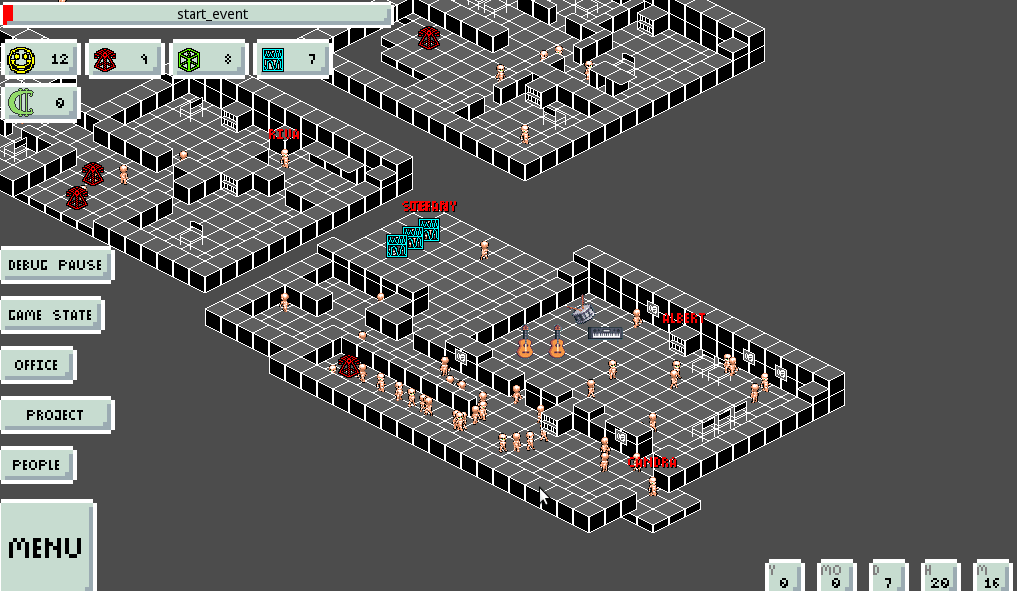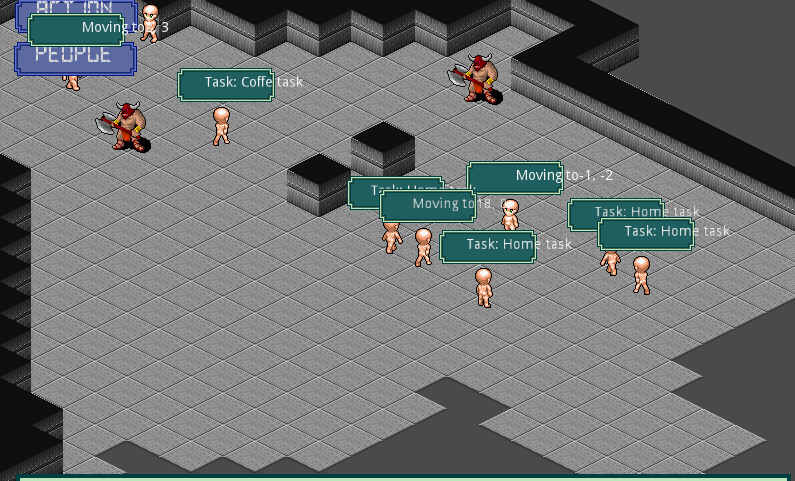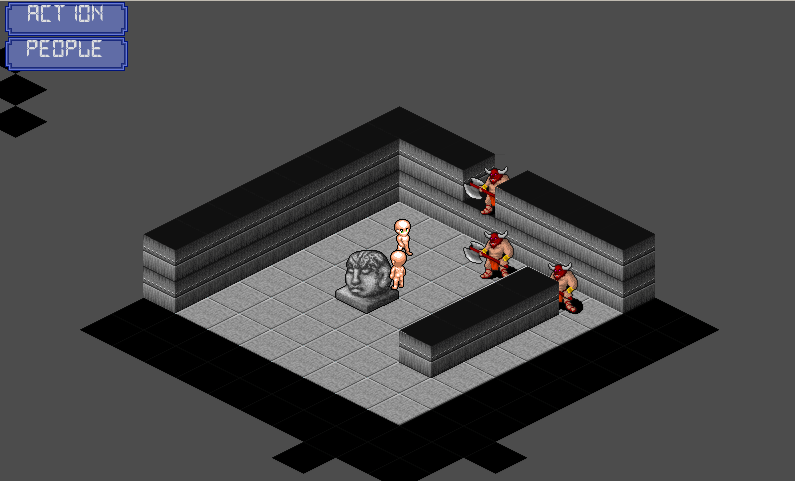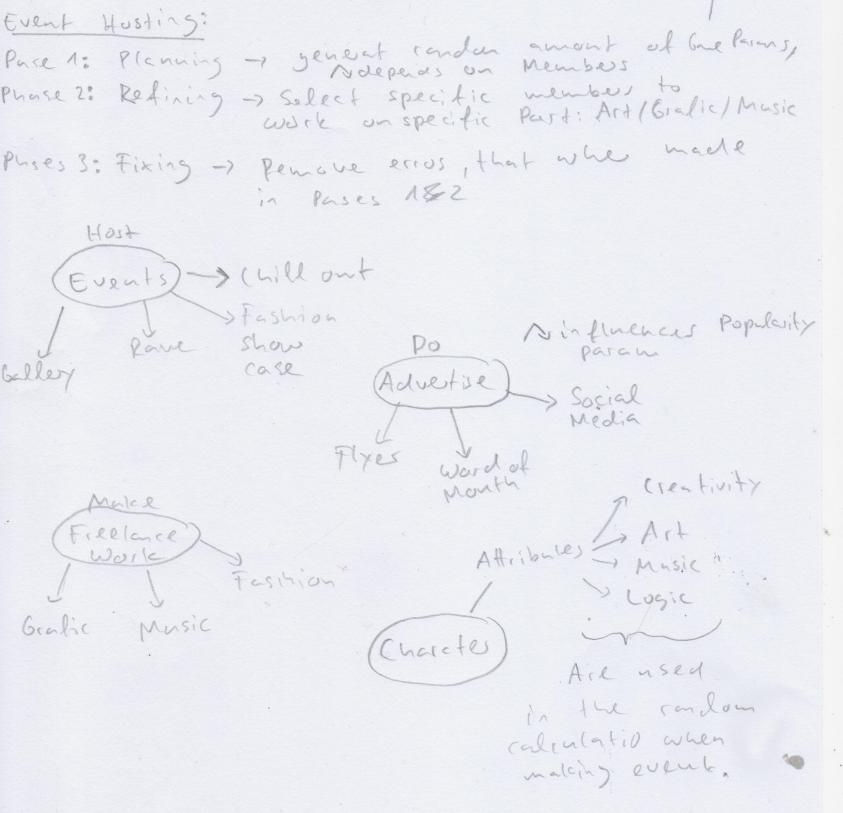Related
Retro Escape
A simple yet challenging puzzle game with programmable blocks, a level editor, and QR-based sharing. Built with Kotlin/LibGDX and ZXing.
Popular topics
01 min reading in—GamesDesignDevelopment
A Game Dev Story–inspired isometric simulation for the Vibrational Network with evolving features from tasks and stats to events and rooms.

Art Collective Simulator is a Game Dev Story–inspired simulation for the Vibrational Network, a Hamburg-based collective of musical and visual artists. I developed the codebase, while Giaco and Togrul contributed graphics and music.
The project evolved rapidly across several months, adding systems for characters, tasks, rooms, and events, alongside a modernized dynamic UI and mobile support.


Started programming the simulations with a complete task system. Tasks control entities by working through task queues. Tasks are selected based on player actions and game state.

First visual prototype: basic isometric functionality — y-sorting, 2D movement, clickable tiles, character animation, and walk cycles.

I started developing the general framework using the Godot game engine. I outlined core concepts and scoped the project. The following diagrams show interactions between scores, entities, and events — the game's main components.


I began the collaboration with the Vibrational Network in Hamburg — a collective of musical and visual artists. A friend reached out about developing a game; I was motivated to build my first isometric game: a Game Dev Story–style simulation with art.
Related
A simple yet challenging puzzle game with programmable blocks, a level editor, and QR-based sharing. Built with Kotlin/LibGDX and ZXing.
Related
Offline file transfer by streaming sequences of QR codes — printable, scannable, and network-free.
New
A comparison of Antigravity, Cursor, Windsurf, and Codium + Continue for agentic coding tasks.